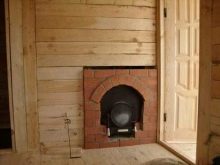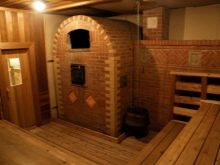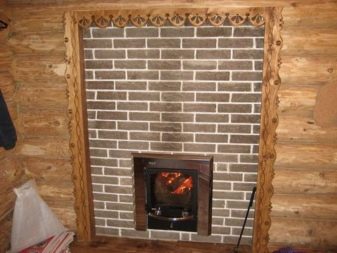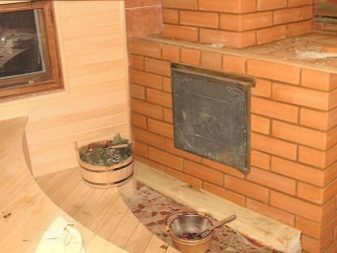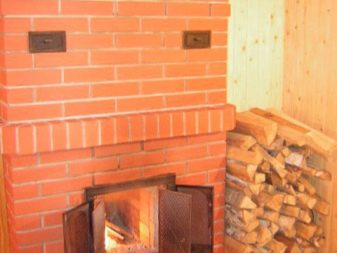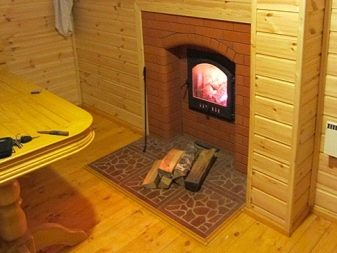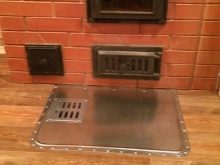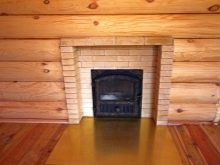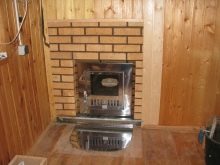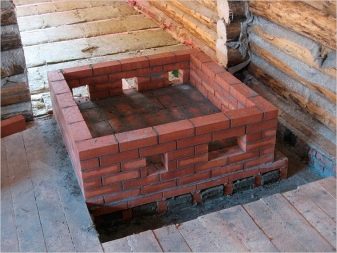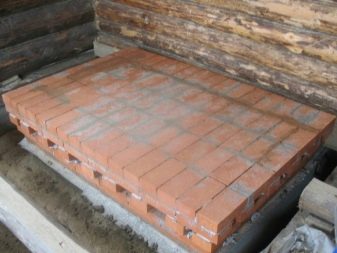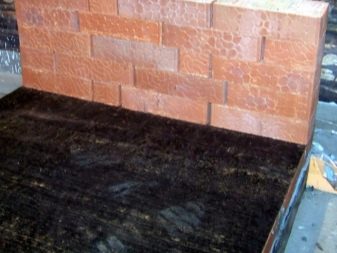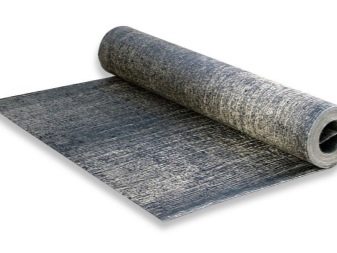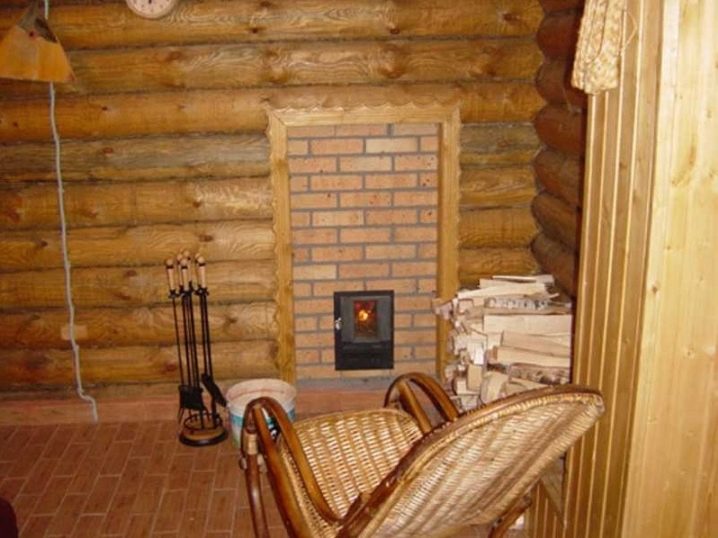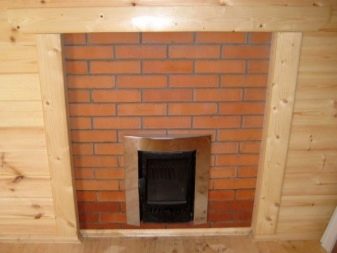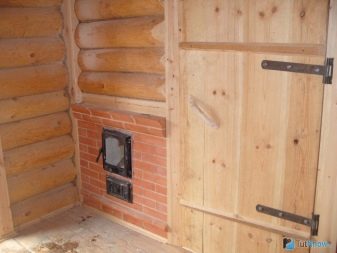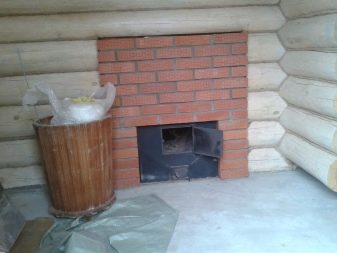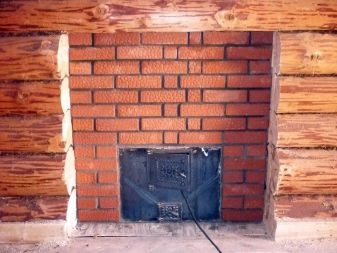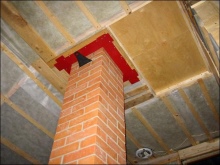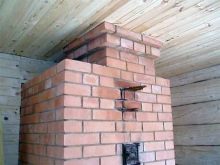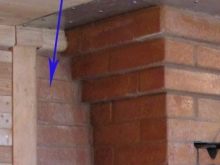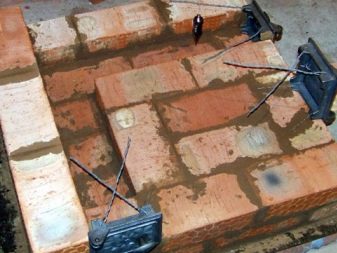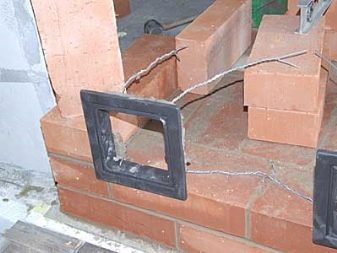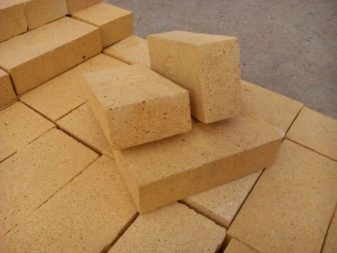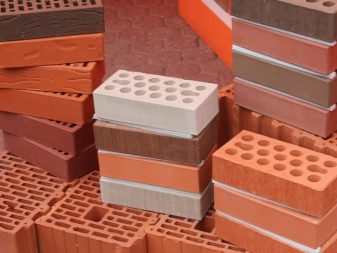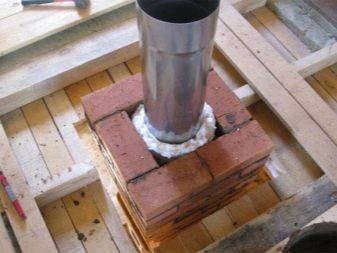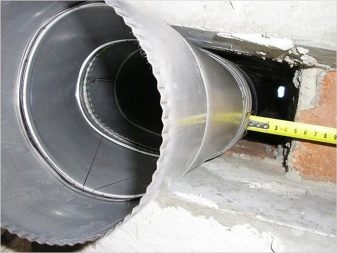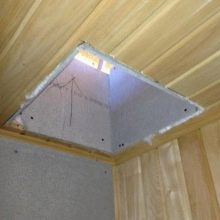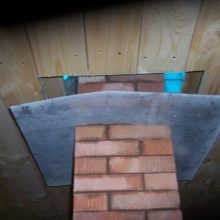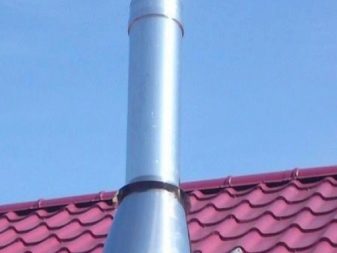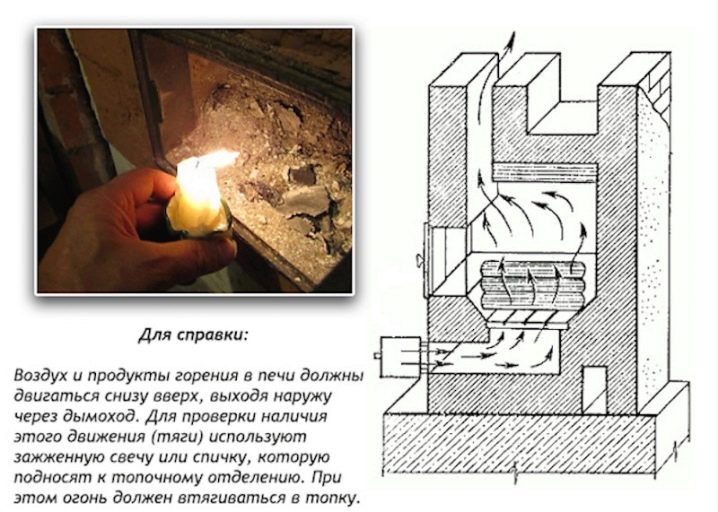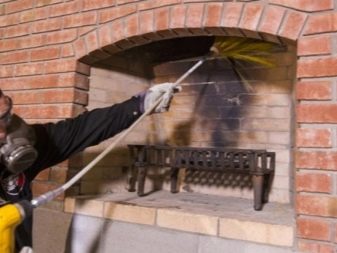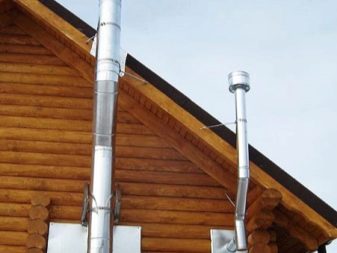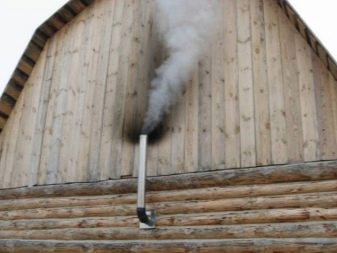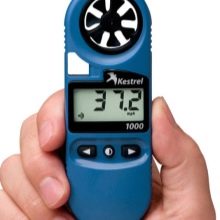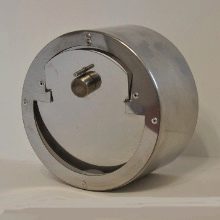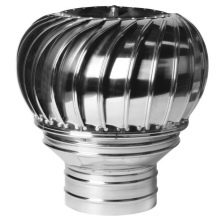Brick furnace for a bath with a firebox from a dressing room: installation features
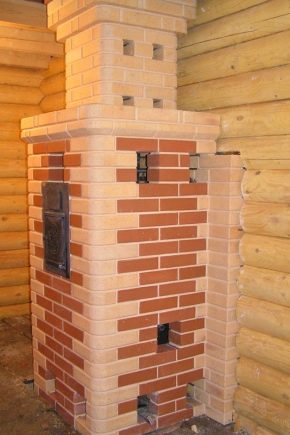
It seems that no one will argue that a good bath besides hygienic purposes is a great way to treat and prevent diseases of various kinds. The benefits of bath procedures largely depend on the most important part of it - the steam rooms. And the steam room itself, in turn, is good with a properly folded stove.
The most popular and easy-to-maintain stove type is a stove with a firebox.taken out in the waiting room. Today I would like to talk about this version of its location.
With the eternal choice - a furnace made of metal or brick, the choice of an absolute majority - a brick furnace.Many factors speak in its favor: moderate, non-burning warming up of air, aesthetics of appearance, humidity and degree of steam supply, which is easier to regulate.
Features: advantages and disadvantages
Of course, the installation of a standard heater is simpler than the complex arrangement of such an additional accessory as a firebox, placed in a waiting room or in another room. It is more expensive, but we can confidently say that all this will be covered by the comfort that this option will create when using it. Especially this configuration stove will say its word in the winter.
Another advantage is that you can do without arranging the ventilation system in the steam room due to the fact that there will be no oxygen burning out in the steam room, since the metal parts of the furnace are taken out of its limits.
For practical reasons, the dimensions of a brick kiln depend primarily on the size of the steam room, the number of people, the seasonality of the use of the bath, the purpose of using the furnace itself.
Conclusion of the firebox brick stove in the dressing room is convenient because
- there is always an opportunity to clean the ashes, to melt the furnace;
- firewood is always at hand, they are always well dried;
- furnace heating mode is easier to control;
- the heating of the dressing room is always provided with heat from the stove;
- carbon monoxide in the event of a loose fit of the firebox door enters the waiting room, and not in the steam room;
- iron parts of the firebox do not overheat, do not burn oxygen in the steam room, do not dry steam.
Disadvantages of the location of the furnace in the waiting room:
- brick stove gets warm for a long time;
- the stove consumes more wood than metal;
- for throwing firewood you have to run out into the waiting room.
Installation
Deviation from the installation of sauna stoves is the most common cause of fire.
Here are a number of recommendations to avoid this:
- The furnace should be at least 35-50 cm from the wall if the bath is made of fire-hazardous materials.
- The air gap between the metal parts of the furnace and any wooden structure must be at least 1 m. If the dimensions of the bath do not allow this, it is necessary to use external protective special screens.
- The firebox door should be at a minimum of one and a half meters from the opposite wall.
- The furnace is strictly prohibited to be installed directly on the floor, consisting of combustible materials: on top of the boards are laid cardboard covered with basalt chips, which, in turn, are covered with sheet metal.The dimensions of the shelter must exceed the dimensions of the furnace projection of more than 5-10 cm.
- The floor under the firebox door is to be covered with a non-flammable coating with an area of at least 40-50 cm2.
If the pipe is installed with your own hands, it is necessary to install a so-called passage unit that will prevent the pipe from contact with the roof covering.
The foundation of a brick furnace
Considering that the weight of a standard brick and mortar on it is about 4 kg, for this reason the furnace requires a very solid foundation. In addition, the high temperature of the furnace can warm any material, even of considerable thickness, for a long time it affects the surrounding layers of soil. Therefore, the foundation of the furnace itself should not be in contact with the material of the foundation of the bath. To avoid furnace precipitation, it should be insulated with mineral wool.
The foundation must be waterproofed with a material like roofing material. When putting sheets of waterproofing, their edges bend and coat with clay so that the brickwork was more than one and a half centimeters thick. It is imperative to install hydroprotection at the level of the slag and the floor boards, between the bricks of the stove wall and the boards, necessarily putting metal and asbestos sheets on top.
Brick stove bath
The most common construction of the bath is a combination of the furnace wall and the wall of the dressing room to save materials and better heat exchange. If the bath itself is made of stone or other non-flammable materials, mineral wool or special non-combustible sandwich panels on silicate or asbestos are used to insulate its walls from the furnace.
If the walls and the ceiling of the bath itself are made of wood, then the fire safety regulations for thermal insulation states that it is necessary:
- provide a gap of at least 1.3 m between the heating furnace and the ceiling or wall;
- the firebox door in the waiting room should be at a distance of 1.2 m and more from the nearby wooden wall;
- in the case when the firebox passes through a wall made of flammable material to another room, it is necessary to make an insert made of refractory material not less than 500 mm, which has high heat resistance and a length equal to the length of the fire chamber;
- fire protection coating is placed on the floor in front of the door (most often metal is used) with an area of 40x80 cm.
Mandatory requirement - fire insulation or cutting brick surfaces of the walls of the furnace and wooden structural elements.In fact, this is a brick and clay, laid in layers with a certain gap or asbestos sheet. After such works, a ceramic cover is formed, which largely isolates wooden structures. In addition, they protect against flames escaping through the cracks resulting from the destruction of the masonry in the event of an emergency.
Insulating the cotton wool in the same way isolates the chimney. Additionally, strapping is made of metal sheets.
Output pipe furnace through the ceiling or wall - the most fire hazardous area. In this place the ceiling is embroidered and trimmed with bricks in the same way as it was done with wooden walls.
If the bath is small and the brick construction of a relatively large size and mass is not required, it is allowed to install a stove with a firebox placed in a small dressing room that is placed on a wooden floor. The order of such a furnace is very simple - no more than five in a row, and no more than ten rows themselves.
The furnace is allowed to put and not on a concrete foundation, if all fire safety measures are observed.Sometimes there is a need to open the floor and organize additional support or lintels.
At the same time it is necessary to observe the following restrictions:
- total mass - no more than semitones;
- 600 kg - for an established floor;
- 700 kg - for freshly laid floor.
If these conditions are met - lay a brick compensator for the foundation of the furnace. Asbestos fibers are added to the masonry mortar used in the base and side screens.
Brick types suitable for work:
- Standard ceramic brick has a size of 25x125x65 mm. Additional treatment with heat-resistant lacquer is needed to increase the resistance to critical operating conditions - temperature and high humidity.
- Fireclay refractory bricks should be used more reliably, as it is made specifically for such purposes.
It has a straw color and comes in three sizes:
- standard 230x125x65 mm
- narrower 230x114x65 mm;
- narrower and thinner - 230x114x40 mm.
Subtlety of output through the overlap
Compliance with fire safety measures with proper removal of the furnace tube through the ceiling and the roof is especially important from the point of view of the possibility of fire.The firebox is isolated from floors as carefully as possible. If the bath is stone or consists of non-combustible materials, it is enough to make gaps on each side of the channel. Later they are filled with a cord made of asbestos or mini wool. An insulation layer is applied with a thickness of more than 2 cm.
Provided that the bath is made of wood (timber, or logs), the gap must be left much more significant - at least 25-30 cm. The brick in this case plays the role of an insulator. Sometimes in the wooden baths leave gaps along the entire chimney. Installation of thermal protection for this reason disappears.
The chimney is mounted at the final stage of construction. The pipe is connected by a pipe. When using a chimney made of metal, through the overlap of the roof it leads into a sleeve that is easy to purchase in the commercial networks of the corresponding profile.
In the case when there is a desire to make a pass-through unit with your own hands, it is necessary to observe the following scheme of actions.
- The opening in the ceiling is made so as to leave a gap of more than 30 cm from the pipe to the nearest wooden ceiling structures on each side.
- Steel box is made from sheet metal.Edges can be fixed with any screws. It is inserted so that its lower cut is flush at the level of the ceiling, not lower.
- Cardboard covered with basalt crumb is laid between the walls of the box and the floor material.
- From the bottom, the box is covered with a moisture-resistant plasterboard with an opening for the pipe itself.
- Then mount directly chimney. The voids remaining in the box are laid with mineral wool.
- “Flash Master” is a sleeve made of heat-resistant silicone material that is able to withstand high temperatures. Alternatively, it is allowed to use a homemade box made of insulated sheet steel, similar to the above described protective cutting box.
The height of the chimney section above the roof should not be less than 80 cm.
It’s quite difficult to master all the subtleties of installing a brick oven in a bath, but nothing is impossible if you have at hand drawings and a guide to action.
Useful recommendations
When heating the stove, the smoke should freely go down the chimney, as if carbon monoxide is not removed through the hood, it can cause serious harm to the human body.If there is a problem, immediately find the cause of the weak thrust and eliminate it.
Several ways to determine the absence of kiln thrust or interruptions to it:
- The easiest way is a plain sheet of paper or a lit match, brought to the open door in the process of stoking the furnace. If the sheet or flame of a match is deflected inwards, then there is a thrust. If there is no deviation or it occurs outside, then the so-called reverse thrust is possible, which can be very dangerous.
- One of the reasons for the weakening of the draft can be an unsealed chimney, a crack, a break, a shift in the pipe, and other defects.
- Another danger is a random spark caught in such a chimney crack on combustible material, which leads to a fire.
- The small size of the blower, through which the exhaust is carried out, can lead not only to the appearance of reverse thrust, but also to an insufficient supply of oxygen to the process of burning the fuel.
- Clogging in the chimney can also interfere with the normal thrust process. In this case, to restore the normal movement of air will help regular cleaning of the chimney. It should be noted that the presence of even one knee in a pipe, where as a result of aerodynamic processes the main amount of soot accumulates, will make the work of the chimney sweep much more difficult.
- If for any reason it is not possible to stoke for a long period of time, an air block may form in the chimney, consisting of dense air layers. As a rule, it resolves immediately after the start of regular heating by itself.
- Insufficient firebox volume.
- The wide and long chimney does not work with a small firebox.
Thrust recovery action
After eliminating the above reasons, you can use special devices for regulating thrust:
- anemometer - determine the draft in the chimney;
- draft stabilizer - is an “umbrella” above the upper cut of the chimney pipe, not only increases the draft, but also regulates it;
- deflector - is a device that strengthens the craving;
- rotary turbine is a type of deflethor.
In conclusion, it is safe to say that a brick-built kiln will serve reliably, subject to certain rules. It is not necessary to change the furnace once folded, to shift its individual parts, especially the walls, since the probability of cracking and even collapse of the whole structure will sharply increase. If necessary, the furnace undergoes complete disassembly and relocation.
How to install a furnace with a portable furnace in the bath, see the following video.
